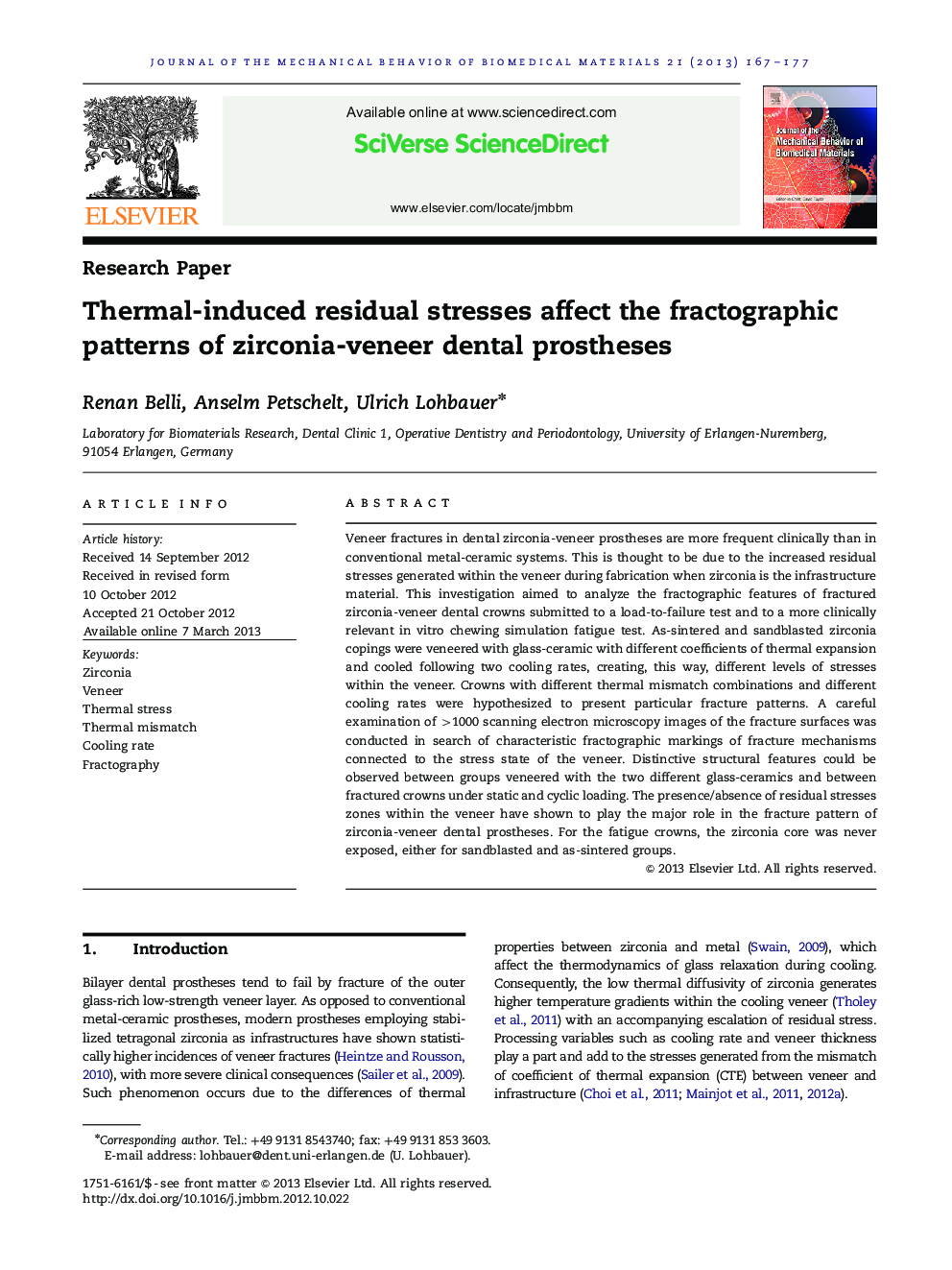| کد مقاله | کد نشریه | سال انتشار | مقاله انگلیسی | نسخه تمام متن |
|---|---|---|---|---|
| 810862 | 1469124 | 2013 | 11 صفحه PDF | دانلود رایگان |

Veneer fractures in dental zirconia-veneer prostheses are more frequent clinically than in conventional metal-ceramic systems. This is thought to be due to the increased residual stresses generated within the veneer during fabrication when zirconia is the infrastructure material. This investigation aimed to analyze the fractographic features of fractured zirconia-veneer dental crowns submitted to a load-to-failure test and to a more clinically relevant in vitro chewing simulation fatigue test. As-sintered and sandblasted zirconia copings were veneered with glass-ceramic with different coefficients of thermal expansion and cooled following two cooling rates, creating, this way, different levels of stresses within the veneer. Crowns with different thermal mismatch combinations and different cooling rates were hypothesized to present particular fracture patterns. A careful examination of >1000 scanning electron microscopy images of the fracture surfaces was conducted in search of characteristic fractographic markings of fracture mechanisms connected to the stress state of the veneer. Distinctive structural features could be observed between groups veneered with the two different glass-ceramics and between fractured crowns under static and cyclic loading. The presence/absence of residual stresses zones within the veneer have shown to play the major role in the fracture pattern of zirconia-veneer dental prostheses. For the fatigue crowns, the zirconia core was never exposed, either for sandblasted and as-sintered groups.
Figure optionsDownload high-quality image (163 K)Download as PowerPoint slideHighlights
► Influence of the zirconia-veneer CTE mismatch on the fractographic patterns was observed.
► No influence of the cooling rate on the fractographic patterns could be observed.
► Differences between veneer microstructures were evident.
► Fatigue and static loading resulted in different fractographic patterns.
► No coping exposure was detected for as-sintered or sandblasted zirconia.
Journal: Journal of the Mechanical Behavior of Biomedical Materials - Volume 21, May 2013, Pages 167–177